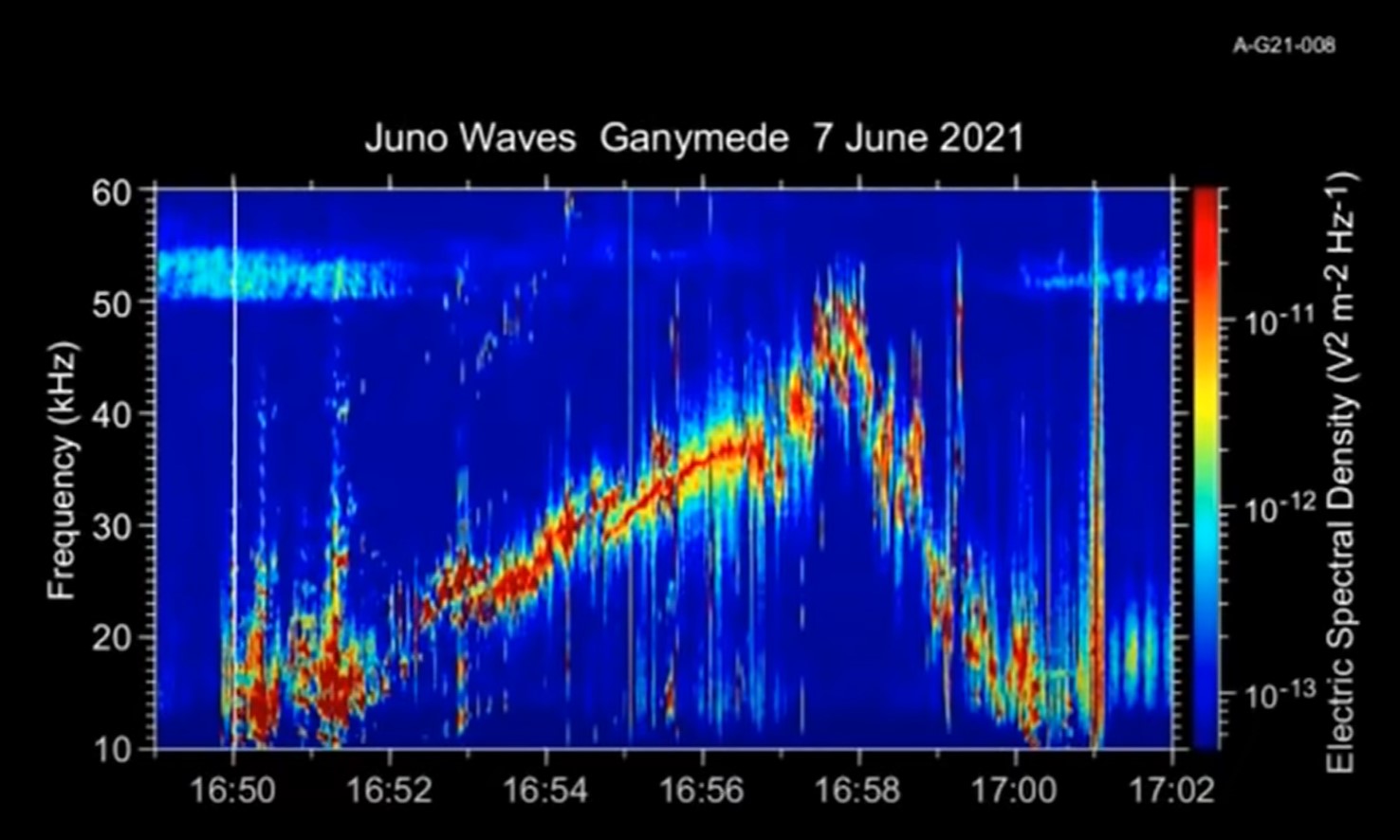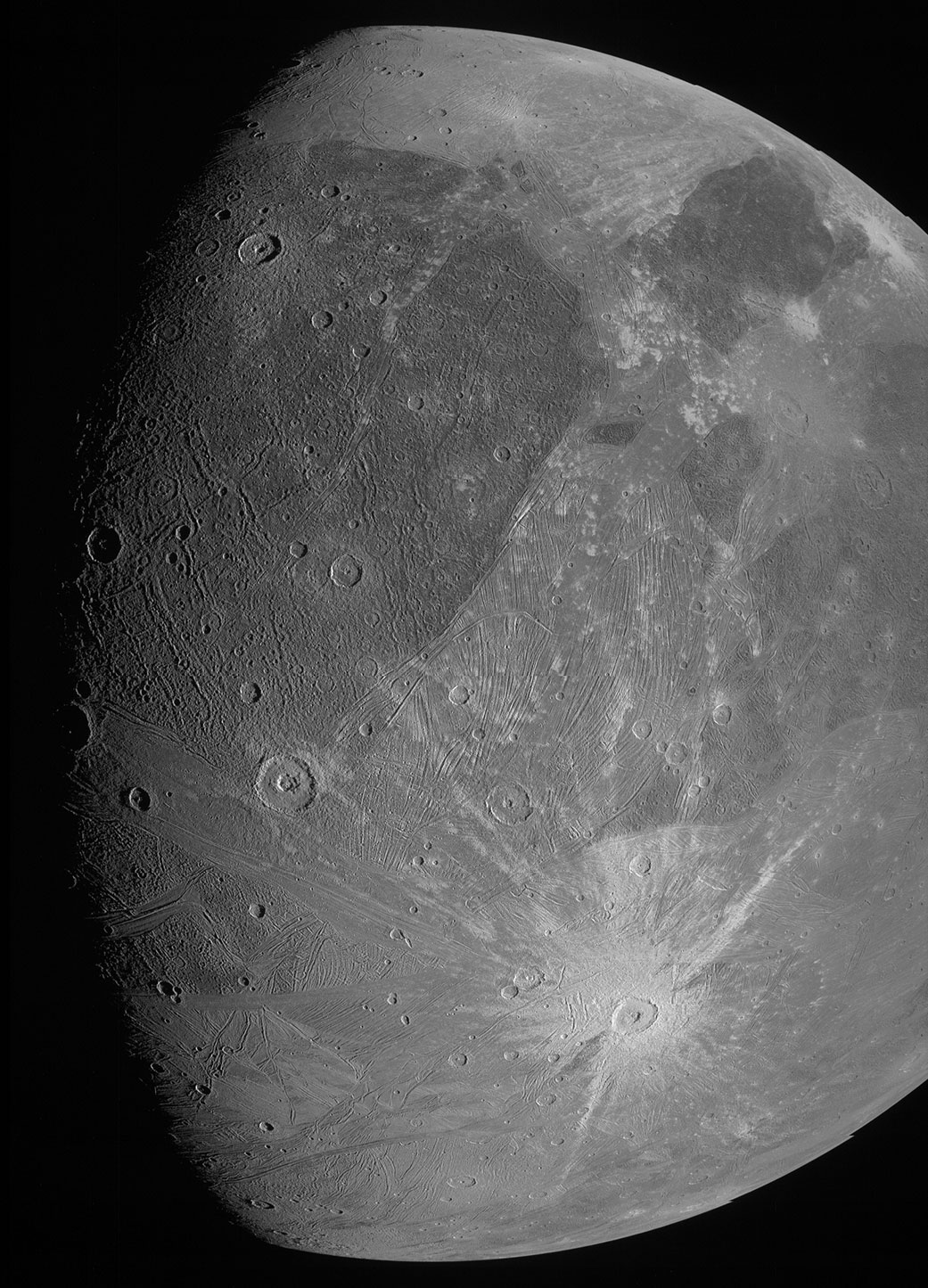Hear Jupiter's moon Ganymede, the largest in the solar system, sing in new squeaky Juno video
The magnetosphere of Jupiter's moon Ganymede sounds like a dial-up modem in a newly released audio clip from NASA.
This month the team behind the space agency's Juno mission published new data from the spacecraft, which has been pirouetting around Jupiter and its many moons since July 2016. One of the most fascinating new troves of information about the Jupiter system is a 49-second audio track generated from data collected by Juno's Waves instrument. The sounds were discussed at this year's American Geophysical Union fall meeting, held in New Orleans and online from Dec. 13 to Dec. 17.
"This soundtrack is just wild enough to make you feel as if you were riding along as Juno sails past Ganymede for the first time in more than two decades," Scott Bolton, Juno Principal Investigator from the Southwest Research Institute in San Antonio, Texas, said in a NASA statement.
Related: Cruise by Jupiter and its giant moon Ganymede in this gorgeous Juno flyby video

The squeaky soundbytes in the audio clip represent electric and magnetic radio waves emitted by Ganymede, according to a NASA statement describing the newly published data. The Juno spacecraft performed a close flyby of the Jovian moon on June 7, during which time the Waves instrument collected the raw frequency data that Juno's team later shifted into the audio range.
"If you listen closely, you can hear the abrupt change to higher frequencies around the midpoint of the recording, which represents entry into a different region in Ganymede's magnetosphere," Bolton said.
Ganymede is the largest moon in the solar system and it's even bigger than Mercury and Pluto, according to NASA. Scientists believe that, not unlike Earth, this world boasts both a magnetosphere and a saltwater ocean.
Get the Space.com Newsletter
Breaking space news, the latest updates on rocket launches, skywatching events and more!

A magnetosphere is a region of charged particles that surrounds many planets, including Jupiter, but such a structure had never been found around a moon until Jupiter's first robotic visitor, the Galileo spacecraft, detected Ganymede's. (Coincidentally, Tuesday (Dec. 28) also happened to mark the 21st anniversary of another major Galileo discovery at Ganymede: auroras, which are created by charged particles hitting the magnetosphere.)
The new audio clip is a cool bit of science, but it's not the first time a spacecraft has captured the sounds of Ganymede's magnetosphere. According to NASA, Galileo also captured "whistling and static sounds" caused by this region around the Jovian moon.
Juno's June 2021 flyby was the first time since Galileo's approach two decades ago that a spacecraft managed to get that close to Ganymede. At its closest, the Juno spacecraft was less than 645 miles (1,040 kilometers) from Ganymede's surface and was moving at about 41,600 mph (67,000 kph), according to the space agency.
Juno continues exploring Jupiter and its moons beyond its primary mission timeline, which ended in July 2021. The spacecraft is now conducting an extended mission through September 2025 or the end of its life.
Follow Doris Elin Urrutia on Twitter @salazar_elin. Follow us on Twitter @Spacedotcom and on Facebook.
Join our Space Forums to keep talking space on the latest missions, night sky and more! And if you have a news tip, correction or comment, let us know at: community@space.com.

Doris is a science journalist and Space.com contributor. She received a B.A. in Sociology and Communications at Fordham University in New York City. Her first work was published in collaboration with London Mining Network, where her love of science writing was born. Her passion for astronomy started as a kid when she helped her sister build a model solar system in the Bronx. She got her first shot at astronomy writing as a Space.com editorial intern and continues to write about all things cosmic for the website. Doris has also written about microscopic plant life for Scientific American’s website and about whale calls for their print magazine. She has also written about ancient humans for Inverse, with stories ranging from how to recreate Pompeii’s cuisine to how to map the Polynesian expansion through genomics. She currently shares her home with two rabbits. Follow her on twitter at @salazar_elin.









